Return of the Gunhild-sons—Earl Sigurd of Lade killed—The Murder of Trygve Olafson and Gudrod Biornson—Earl Haakon—Harald Grayfell killed in Denmark — Attacks by the Danish King, Harald Bluetooth—The Joms-vikings—Sigvalde Jarl makes War on Haakon—The Battle in Hjorungavaag—Revolt against Earl Haakon—Olaf Trygvason arrives in Norway—Earl Haakon killed by his Slave
The Gunhild-sons (or Eriks-sons) immediately returned to Norway when they received the message that Haakon the Good had named them as heirs to the throne. The oldest one, Harald Grayfell (Graafeld, so named after having once worn a gray fur robe), was considered as chief king, but their mother Gunhild was in fact the chief ruler. They were penurious and cruel, and soon became widely hated. There were many chiefs in the country at that time. Trygve Olafson, a grandson of Harald the Fairhaired, ruled in Viken, or the country around the Christiania Fjord; his cousin Gudrod, son of Biorn the Merchant, was chief in Westfold, and Earl Sigurd of Lade ruled the country around Throndhjem. Gunhild’s sons at first resided mostly in the middle of the country, but soon laid plans to obtain more power. By great promises they bribed Griotgard, a brother of Earl Sigurd, to send them word when there might be a favorable opportunity to attack and kill the earl. This plan succeeded. Having been notified by Griotgard that Earl Sigurd was at a feast at Oglo in Stjoradal and had but few men with him, King Harald Grayfell and his brother Erling surrounded the house at night, set fire to the building, and burned the earl and all his men.
When the people heard of Earl Sigurd’s death, there was a great uprising. They gathered a large fleet, and, after having proclaimed Sigurd’s son, Haakon, as their earl and commander-in-chief, they steered out of the Throndhjem Fjord, intent upon taking vengeance. When Gunhild’s sons heard of this, they fled southward to Raumsdal and South More. Some time afterward the Gunhild-sons attacked and murdered Trygve Olafson, king in Viken, and Gudrod Biornson, king in Westfold. Harald Grayfell hastened to Trygve Olafson’s home, hoping to be able to exterminate the whole race; but Trygve’s widow, Astrid, had fled with her foster-father, Thorolf Lusarskeg.
Gunhild’s sons collected a great army in Viken and sailed northward, collecting men and ships on the way from every district for the purpose of fighting Earl Haakon. When Earl Haakon heard of this, he also collected men and fitted out ships, but when he ascertained the size of the approaching fleet, he sailed with a few men south to Denmark, where he was well received by King Harald Bluetooth (964). Gunhild’s sons brought their army north to Throndhjem, and subdued the country and collected taxes, of which they had received none while Earl Haakon was there.
In Denmark Earl Haakon laid some deep plans to obtain power again. A nephew of King Harald Bluetooth, called Gold-Harald, had returned home and demanded half of the kingdom. As the king had no desire to yield to his demand, but still feared Gold-Harald’s influence with the people, Earl Haakon advised him to get Norway for his nephew instead. He was to invite the Norwegian king, Harald Grayfell, on a friendly visit to Denmark, and then have Gold-Harald kill him. Afterward it would be easy to take Norway on account of the very hard times prevailing there, and the great unpopularity of the Gunhild-sons. The plan was followed; but when Gold-Harald had killed Harald Grayfell, he was in turn attacked and killed by Earl Haakon. Soon after King Harald Bluetooth sailed for Norway with 720 ships. He had with him Earl Haakon, Harald Grenske, a son of King Gudrod, and many other great men who had fled from their udal estates in Norway on account of Gunhild’s sons. They won the country without resistance, and King Harald installed Haakon as earl of the northern and western parts of the country. The earl was to pay certain taxes to the king and help him with armed men in case of war. The king retained for himself the country around Viken, and left Harald Grenske there as his representative.
The two surviving brothers, Gudrod and Ragnfred, fled with their mother, Gunhild, to the Orkneys.
Earl Haakon (970-995)
EARL HAAKON subdued all those parts of the country belonging to his dominion, and remained all winter (970) in Throndhjem. As he proceeded along the coast he ordered that in all his dominions the heathen temples and sacrifices should be restored, and continued as of old. The people thought they soon had proof that the gods were pleased with Haakon’s action, for, according to the saga, “the first winter that Haakon ruled over Norway the herrings set in everywhere through the fjords to the land, and the seasons ripened to a good crop all that had been sown,” while for several years previously dearth and hard times had prevailed.
Earl Haakon waited for an opportunity to repudiate his obligations to the Danish king, and it came in time. In 973, when Otto II. became emperor of Germany, King Harald Bluetooth prepared himself for war in order to resist the emperor’s claim to sovereignty over Denmark, and in 975 he ordered Earl Haakon to come to his aid with all the forces it was possible to raise. Haakon complied with the request, and for a time successfully fought the Germans. But when he had boarded his ships and prepared to sail homeward, the emperor returned for a second attack, and soon compelled the Danish king to make peace. King Harald Bluetooth agreed to introduce Christianity both in Denmark and in Norway. He sent for Earl Haakon and made him accept baptism and promise to introduce Christianity in Norway. Priests were sent with him to help him with this work. Haakon set sail with the priests on board; but no sooner did he get a favorable wind than he put the priests ashore, and sailed away. From now on he considered himself the sworn enemy of the Danes. He steered through the Sound, and harried the coasts on both sides. At the coast of East Gautland he made a great heathen sacrifice. Thereupon he burned his ships and marched through the country with his men. He defeated Earl Ottar, the ruler in Gautland, and continued his march through Smaaland and West Gautland to Norway. He again took up his residence in Throndhjem.
King Harald Bluetooth was greatly incensed at Earl Haakon’s action, and decided to take an awful revenge. He collected a great fleet, which he brought to Norway. He burned and destroyed the settlements and killed a great number of people wherever he came. In Lærdal in Sogn, it is said that only five dwellings were left unburned. The inhabitants fled to the woods with such movable goods as they could save. As soon, however, as it was reported that Earl Haakon was coming southward with a fleet, King Harald lost his courage, set sail, and returned to Denmark.
When Harald Bluetooth died (985), his son Svein, who afterward was given the surname Tjuguskeg (Fork-beard), became king of Denmark. He instigated the Joms-vikings to make war on Earl Haakon. These vikings were Danes, who lived at Jomsborg, Pomerania, on the island Wollin or Jom, at the mouth of the river Oder. They were very powerful and warlike, and had very strict laws. No one could join their company who was older than fifty or younger than eighteen years, and no woman was permitted to enter their burgh. They considered it a disgrace to show fear or to complain of pain. Earl Sigvald (Sigvalde Jarl), a son of King Strut-Harald of Scania (Skaane, in the southern part of Sweden), was chief of the Joms-vikings at this time. King Svein of Denmark invited these vikings to a great feast in memory of his father, and as Earl Sigvald’s father had fallen about the same time, he suggested that they should also drink his “funeral-ale.” The Joms-vikings came to the festival with their bravest men, forty ships of them from Vendland (Pomerania), and twenty ships from Scania. All the guests drank a great deal, and there was great gayety in the hall. According to old custom on such occasions they made solemn vows, in emptying the drinking-horns. King Svein, in drinking to his father’s memory, made the solemn vow, that before three winters were past he would go with his army to England and conquer King Ethelred. The guests also drank Christ’s health, and a bowl to the memory of Saint Michael. Thereafter Earl Sigvald drank to his father’s memory, and made a vow, that before three winters came to an end he would go to Norway and either kill Earl Haakon or chase him out of the country, and the other Joms-vikings vowed that they would go with Earl Sigvald to Norway and share in the fight. The next morning, when they had slept off their drink, they thought they had promised rather much, and, in order to find Earl Haakon unprepared, they sailed away on their expedition at once.
When Earl Erik, the son of Haakon, who was then in Raumarike, heard of the festival and of the vows of the Joms-vikings, he immediately gathered his men, and went to the Uplands, and thence over the mountains to Throndhjem, and joined his father, Earl Haakon. They immediately sent warnings around, and sent messages to North More and South More, and to Raumsdal, and also north to Namdal and Halogaland, summoning all the country to furnish men and ships. Earl Haakon went with an army to South More, and Erik was to follow with what army he could collect from the north.
Meanwhile, the Joms-vikings sailed slowly northward, plundering the coasts. Christmas night they were at Jæderen. At Hjorungavaag (on the island Hareidland in South More) they met Earl Haakon and his sons Erik, Svein, Sigurd and Erling. The earl had 180 ships and boats, fully manned and equipped, and the Joms-vikings had 60 ships. A bloody and fierce battle followed, probably the greatest that had ever taken place in Norway. At first the advantage was on the side of the Joms-vikings, and Earl Haakon was hardly pressed. So many spears were thrown against him that his armor was split asunder, and he threw it off. It is said that Earl Haakon then sacrificed his young son Erling to the gods in order to gain victory. A great hailstorm arose, and the Joms-vikings were defeated, but only after a most desperate fight. Earl Sigvald turned and fled with some of his ships; but many of his men preferred to fall in battle. Haavard the Hewer (Huggende) stood on his knees and fought, after both his feet had been cut off. One of the champions, Bue the Thick (Digre), received a terrible cut that took away his under-lip and chin, and, seeing that resistance was in vain, he took a chest full of gold in each hand and shouted: “Overboard, all Bue’s men,” and jumped into the sea. After the battle the dead were ransacked by Haakon’s men, and the booty brought together to be divided; and there were twenty-five ships of the Joms-vikings in the booty.
While Earl Haakon ruled over Norway there were good crops in the land and peace internally among the peasants. The earl, for a long time, was therefore well liked; but later he became proud and much given to debauchery. According to the saga, he would go so far as to have the daughters of people of high station brought home to him, and after keeping them a week or two send them home in shame. The people therefore began to murmur loudly, and finally they rose against him. Early in the year 995 Earl Haakon was at a feast at Medalhus in Gauldal. There was a mighty peasant in the neighborhood, by name Orm Lyrgja, who had a wife called Gudrun, a daughter of Bergthor of Lundar. She was called the Lundar-sun, because she was so beautiful. The earl sent his slaves to Orm, with the errand that they were to bring Gudrun to the earl. Orm first invited the slaves to take supper, and while they were eating and drinking he sent word around to all his neighbors, and soon had so many gathered at his house that he could refuse to let his wife be taken away. The slaves departed with many threats; but Orm sent out messages to all the neighboring country, and soon a large body of armed men were marching toward Medalhus where Haakon was. With a single thrall (slave) called Kark, who had been with him since boyhood, Earl Haakon fled across the Gaula River, rode his horse into a hole, and left his cloak behind on the ice, in order to make his pursuers believe that he had been drowned. Then he went to the estate of Rimul, where one of the earl’s mistresses, Thora, lived, and asked her to hide him for a few days until the army of the peasants had dispersed. They went to a swine-sty, where Kark dug a deep hole and covered it with boards. The earl and Kark went into the hole, and Thora covered it, and threw earth and manure over it, and drove the swine upon the top of it.
Olaf Trygvason had just then arrived in the country, and when the peasants heard he was of the family of Harald the Fairhaired, they flocked around him and hailed him as their king. Then they all set about hunting for Earl Haakon. At Rimul they looked everywhere for him without finding him. Then Olaf held a House-Thing or council out in the yard, and stood upon a great stone which lay beside the swine-sty, and made a speech to the people, in which he promised rewards and honors to the man who should kill the earl. This speech was heard by the earl and the thrall Kark.
“Why art thou so pale,” asked the earl, “and now again black as earth? Thou hast not the intention to betray me?”
“By no means,” replied Kark.
“We were both born on the same night,” said the earl, “and the time will be short between our deaths.”
King Olaf went away in the evening. When night came the earl kept himself awake; but Kark slept, and was disturbed in his sleep. The earl woke him, and asked him what he had been dreaming.
Kark answered: “I was at Lade, and Olaf Trygvason was laying a golden ring about my neck.”
The earl then said: “It will be a bloody ring Olaf will lay about thy neck if he catches thee. Take care of that! From me thou shalt enjoy all that is good, therefore betray me not.”
Then they both kept awake, evidently mistrusting each other. But toward morning the earl dropped asleep. Then Kark killed him, and cut off his head, and hastened to Olaf Trygvason with it, but Olaf had the faithless thrall decapitated. Earl Haakon was fifty-eight years old at his death, in February, 995.
Read next: The Youth of Olaf Trygvason
Author: Sigvart Sörensen


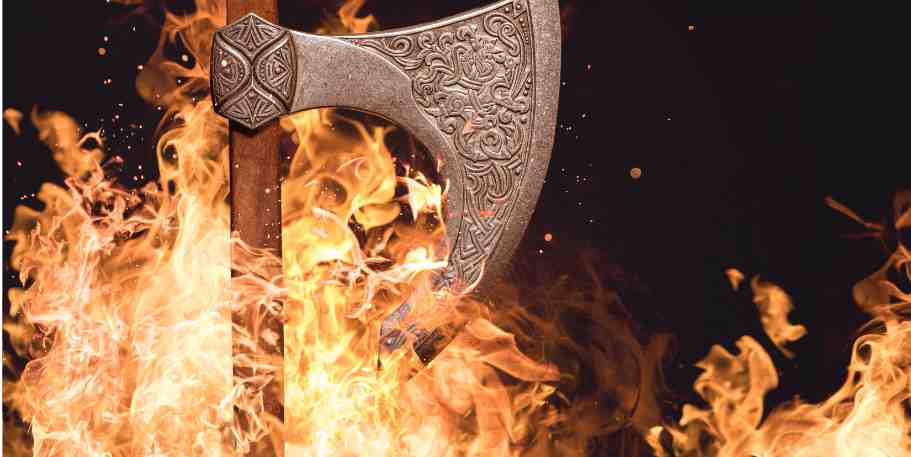

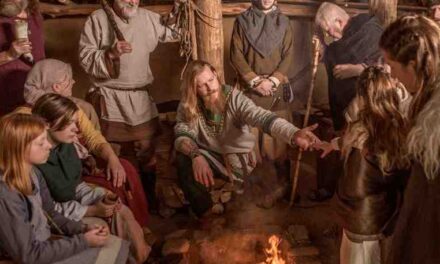
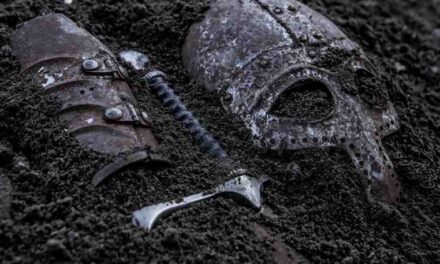
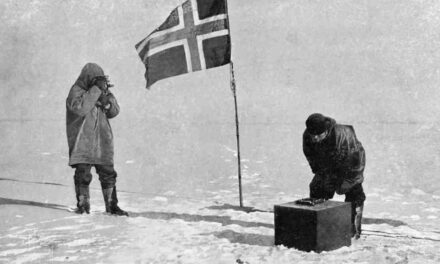









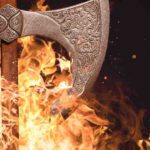
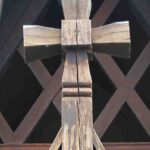
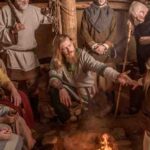


Trackbacks/Pingbacks